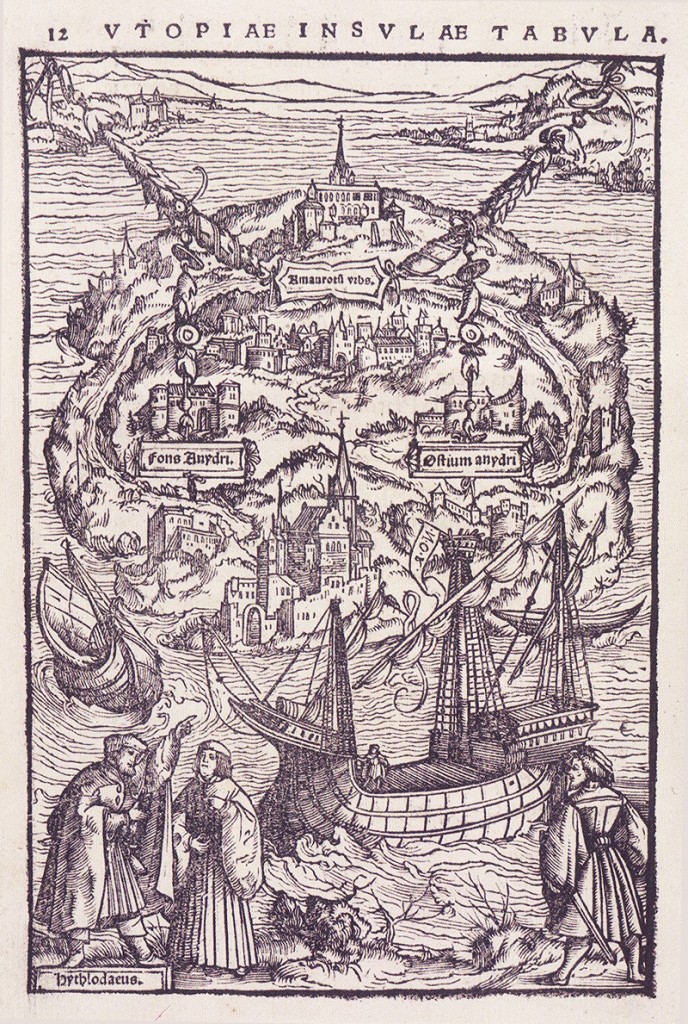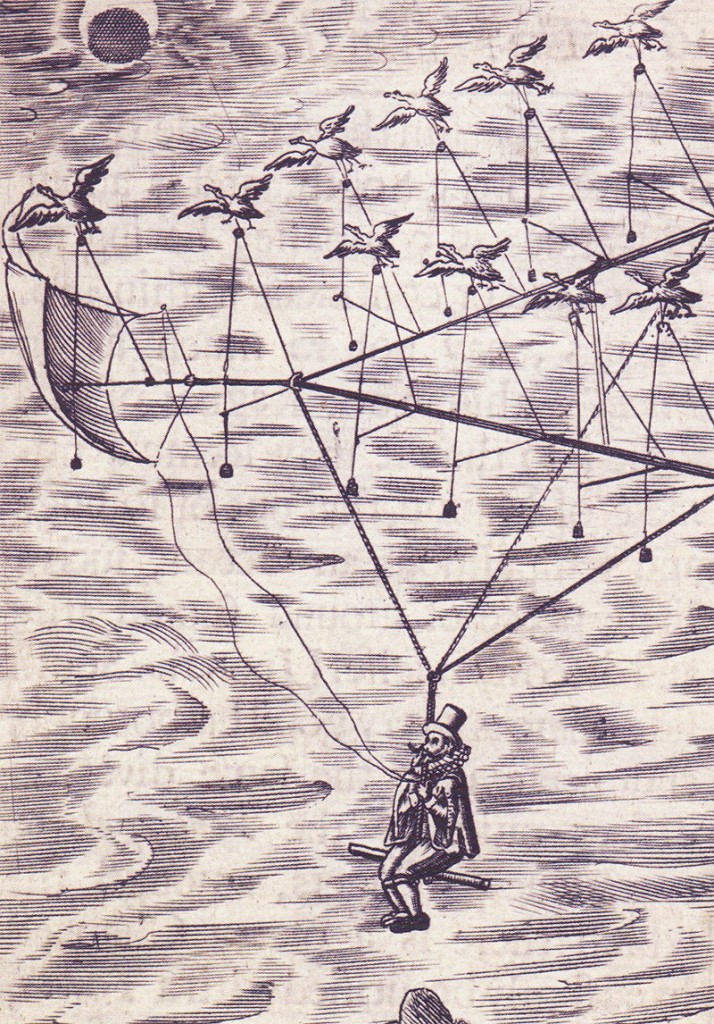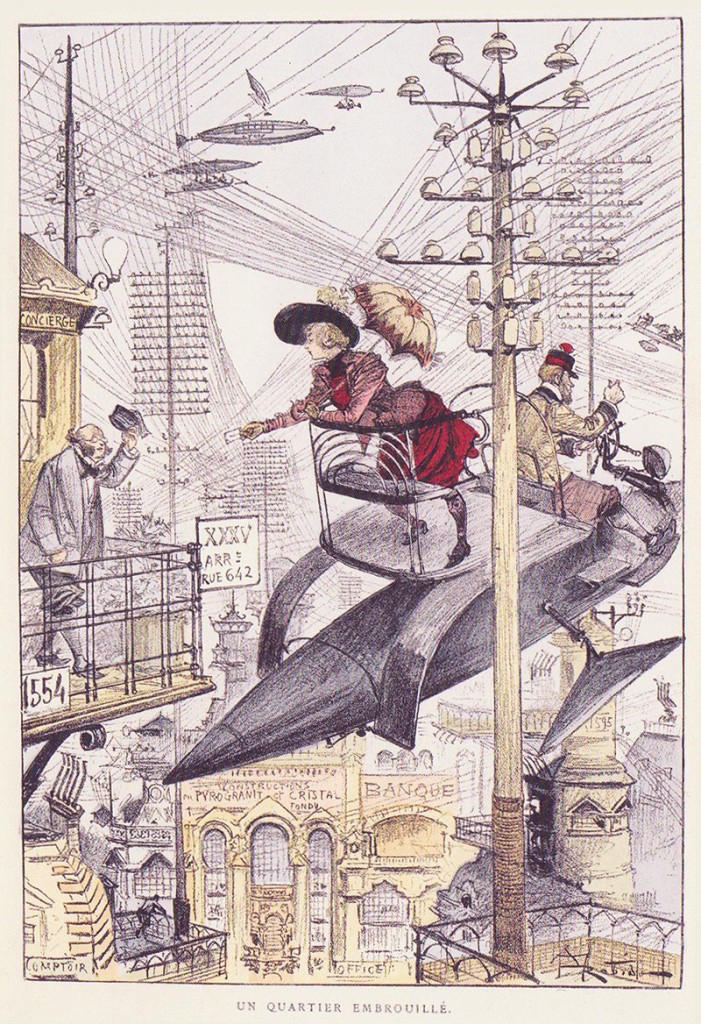Yesterday I popped along to the Out of this World exhibition at one of my very favourite places, the British Library. It’s a thoroughly diverting exploration of the history of sci-fi literature and well worth a visit. يورو 2023 مباريات Any serious exhibition that manages to work in a quote from Groundhog Day – “Well, what if there is no tomorrow? There wasn’t one today.” – gets my vote. Here’s a little visual sampler of some of the treats in store if you do make it along. اللاعب جريزمان And while you’re in the area, why not check out the beautiful, newly re-opened St Pancras Hotel – one of the most whimsical, pleasing buildings in the whole of London. لويس سواريز
Here’s a Map of Utopia from Thomas More’s Libellus vere auerus… insula Utopia, 1518.
And here, rather wonderfully, is a design for a craft to take man to the moon by swan power, from Francis Goodwin’s The Man in the Moone, 1638.
And finally, there’s these hijinks from Albert Robida’s Le Vingtieme Siècle. La Vie Electrique. 1892. As the exhibition notes, “Robida’s 20th century is a century of air transportation for individual (aero-taxi), communications technology such as the ‘téléphonoscope’, (a device that is capable of transmitting visual information) and the emancipation of women. Discuss.



